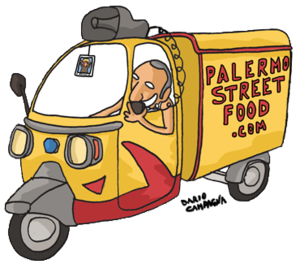We are witnessing a particular food phenomenon. If in the past “nouvelle cousine” and “fusion cuisine” were the top interest for people involved in the “food movida”, now a new, old kind of food is having global success; we are talking about STREET FOOD.
In the history of great civilizations, food has always had an important place, as a key source for social, economic and cultural improvement; from the Sumerians of Mesopotamia to the millennia of Chinese culture, human beings have always paid attention to the pursuit of sustainable food, as an important foundation of a lasting civilization. Street food plays an important role in human consumption; since the beginning of the world's first populations, street food has represented the base of alimentation for the largest quantity of people.
Because street food is so important and has a such a rich history, we want to be clear about what we mean by “Street Food”.
Street Food refers to a class of food that shows a specific characteristic: the moment of preparation of the dish can be separated from the moment of cooking - by space and time - in a way that does not substantially affect the final outcome of the product. This element is essential to understanding the meaning of Street Food as something edible that is cooked it in the street while people are simultaneously purchasing and eating it.
From this idea, we can easily say that Street Food:
involves the use of non-expensive raw materials;
includes preparation methods tending to be simple and intuitive and at the same time;
guarantees a certain minimum standard of cleanliness;
tends to provide a large calorie intake;
uses preparation methods that makes it accessible in terms of cost and time;
requires minimal utensils and usually can be eaten with the hands;
This describes not only the base of Street Food but its greatest perks and strengths. In fact, theoretically, if we want to find the recipe for the historical success of street food, we cannot underestimate its simplicity and low cost.
